How to choose an air conditioner?

For the inhabitants of houses and apartments, the heat delivers a lot of unpleasant minutes, however, until recently, little attention was paid to the creation of a favorable microclimate in the room, and the split system was viewed more as a luxury item, and not as a necessary household appliance. But times go by, the situation is changing, so today an increasing number of homeowners are striving to create comfortable living conditions for themselves and their loved ones. Air conditioners and split systems have become a popular product on the market in a wide variety of models.
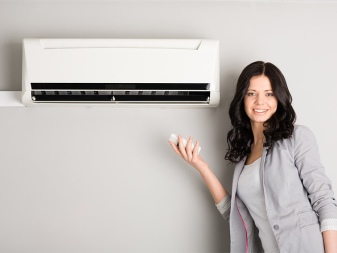
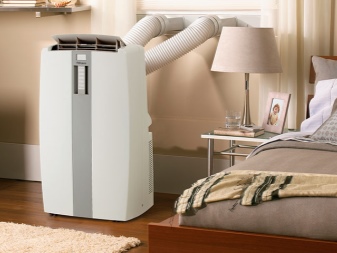

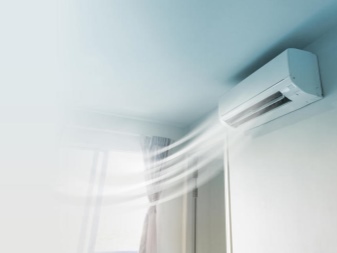
How to choose the type?
To begin with, we offer you a list of questions that you will have to answer before choosing the right air conditioner model for your home. You should immediately decide which design will most closely match the existing operating conditions: window, portable or split system.
One of the most important parameters is the power capabilities of the product. Features of future use are also important: do you plan to use the equipment only for cooling air masses in the apartment, or maybe you need a heating option as well.
Don't forget about the energy efficiency parameters, as your electricity bills largely depend on them.
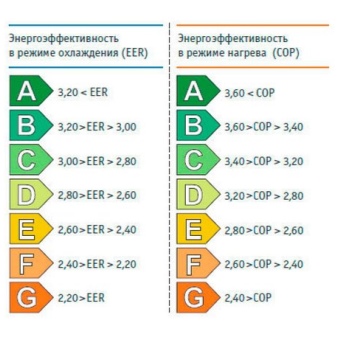
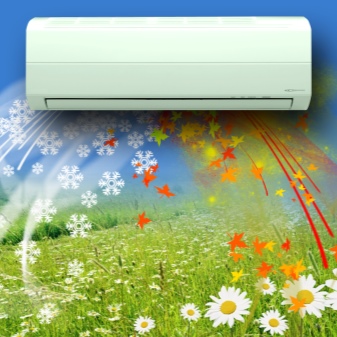
The level of the emitted noise is of fundamental importance. Pay attention to additional functionality, many users choose air conditioners that, in addition to cooling, are engaged in an overall improvement in air quality. And of course, when choosing such expensive equipment, the rating of manufacturers is of no small importance.
The first thing to start with when choosing a suitable climate control model is to decide what type the model you are buying will be. All products offered on the market can be conditionally divided into two basic categories: monoblock units, as well as split systems, which include 2 or more units.

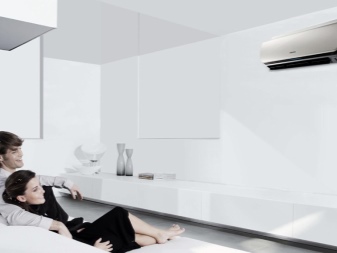
Monoblock structures
Such climatic equipment includes window and mobile options. Window designs were once in high demand and dominated their industry. Nowadays, their demand has been reduced to zero, since this design has much more disadvantages than advantages.
The advantages of window technology include their relatively affordable cost, as well as ease of installation. - such devices just need to be fixed in a pre-prepared opening and connected to the network. However, it should be borne in mind that the creation of such an opening often turns into a rather significant problem. The owners of the living quarters have to either cut a hole in the wall, or violate the integrity of the window. And in fact, and in another case, you will need a rather complex repair and construction work.
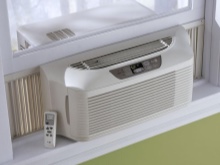
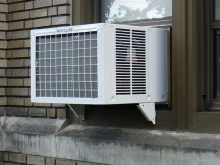
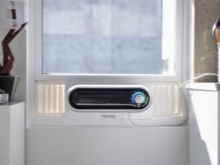
In addition, after installing window equipment, you will have to additionally seal the discrepancies between the air conditioner case and the opening, and this also entails additional costs. Finally, the operation of window technology creates noticeable discomfort, since the compressor is located in a monoblock, respectively, the operation of such devices is quite noisy.
Window models are most often installed in summer cottages, at the end of the warm season, the air conditioner can always be removed and taken home for winter storage, and the opening can be closed with a metal or wooden shield.
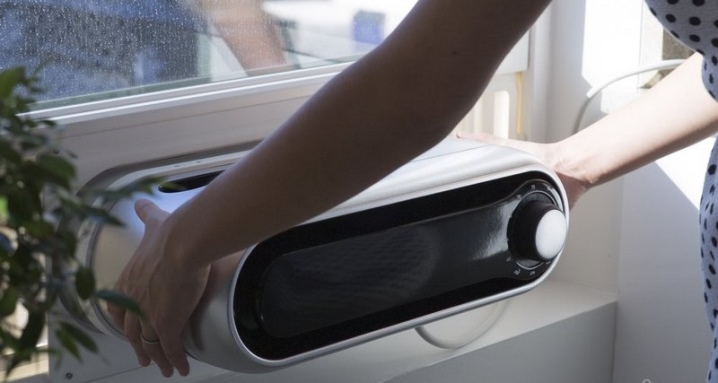
Portable designs are presented in floor versions, they have their own advantages and disadvantages. To begin with, we note that their mobility is conditional - in any case, the structure is tied to the place of the connection channel of the corrugated sleeve, designed to bring the heated air flow out into the street. Of course, such a conclusion can be arranged through an open window, but this method is unsafe - if such an air conditioner accidentally falls, then the risk of injury to people passing by will be very high.
Mobile monoblocks are quite massive, therefore, in combination with a long corrugated tube, they will clutter up the living space. Again, the sound factor is not excluded, since the compressor is located directly in the room. In addition, you will have to constantly monitor the accumulation of condensate, otherwise you might miss the overflow of the collecting tank.
This option is also optimal for seasonal living. For an urban dwelling, this solution can in no way be called successful.
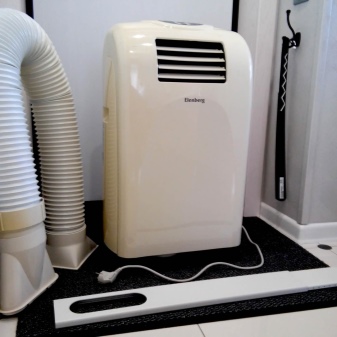
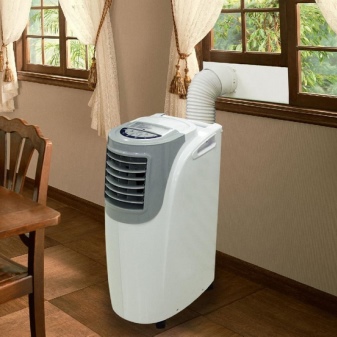
Split systems
A distinctive feature of splits is the presence of several modules. One of them is external: it contains the main power element, that is, the cooling system, this unit is taken out into the street. Only one or a number of internal modules remains inside the room - they are responsible for the direct cooling of the air mass and its redistribution throughout the room. The use of such air conditioners is more comfortable for the inhabitants of the house, because the most noisy structures are located outside.
As for the internal modules, they can have a wide variety of designs. In everyday life, wall models are usually used, they have a rectangular slightly elongated shape. At the same time, the design of the case may vary from manufacturer to manufacturer, so you can always choose a model that will best fit the design of the room.
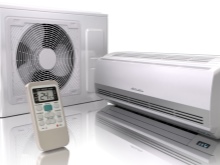
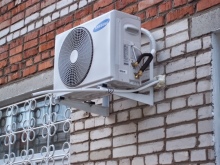
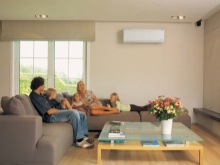
For a multi-room dwelling, it makes sense to choose a multi-split system. In this case several internal modules can be linked to a single external module, while each internal module can have its own individual settings... Of course, the purchase of such equipment and its installation will cost you a lot, but in any case it will be more profitable than buying and installing 2-3 separate air conditioners.
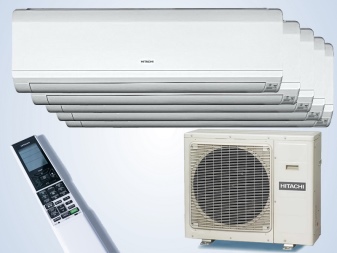

For suspended ceilings, a cassette-type internal module is usually chosen; it fits harmoniously into any modern interiors. Such constructions can distribute flows in different directions.
The internal elements of floor-ceiling splits have a rather useful difference, their scheme allows you to vary the way they are placed. So, such modules can be installed near the floor like a heating radiator - in this case, the air mass will be directed near the wall. The second option assumes fixation on the ceiling - then the cooled stream will circulate along its surface.
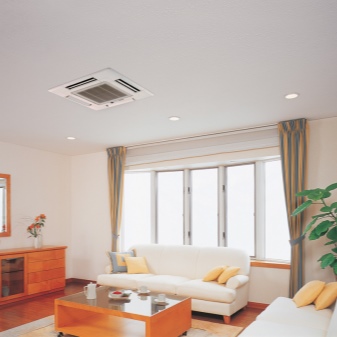

There are models of column-type and channel-type split systems, however, they are practically not used in residential premises. The internal module of the duct structure is usually hung openly, and from it the air masses are led to various parts of a single large space or even to different rooms. The internal module of the column system is mounted in spaces with a large area, such an installation allows the conditioned air to be distributed as evenly as possible throughout the entire volume of the hall.
Both options assume overestimated power parameters, so they are usually installed for air conditioning large sales areas, large office premises and production halls.
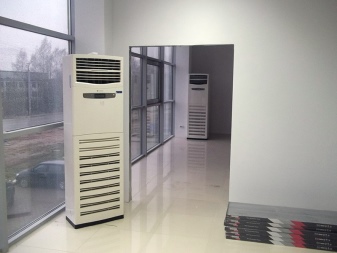
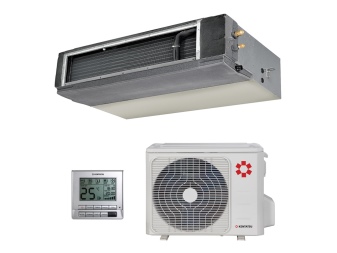
Summarizing all of the above, we can summarize the main pros and cons of split systems. The pluses include:
- split power is much greater than the corresponding parameter of monoblock products;
- the main power component is located in non-residential premises, which ensures a reduced noise level during the operation of equipment;
- thanks to a wide range of models, it is possible to select an indoor module both in design and in the option of its installation.
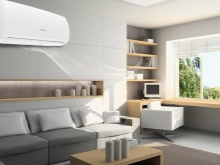
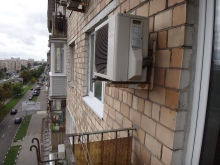
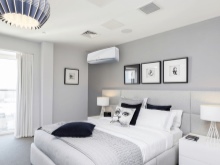
Among the minuses are:
- the complexity of the installation - for installation, it is required not only to fix the external and internal compartments, but also to connect them with an electric cable, as well as pipes through which the refrigerant flows (such work needs a qualifying approach, therefore, for the most part, it is technically impossible for independent execution);
- the system is fixed permanently, this does not give the possibility of seasonal moving, although if you wish, you can always disassemble it and hang it up again, but this entails considerable costs;
- finally, do not forget about some vulnerability of the outdoor unit, which is in no way protected from vandalism, especially if it is located on the first, second or last floors (in some regions there is a ban on placing air conditioners on the facade of buildings, this also needs to be borne in mind when buying a climatic technique).
And yet, in modern homes, it is best to opt for a split system, since it has much more advantages than disadvantages.

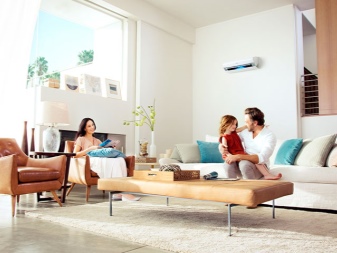
The choice of an air conditioner based on the area of \ u200b \ u200bthe room
When choosing an air conditioner, it is extremely important to take into account the footage of the room where the equipment will be installed. Everything is simple here: the larger the area, the higher the power characteristics should be.
It has been established that in an ordinary apartment with a ceiling height of no higher than 3 m, for every 10 m2 there should be at least 1 kW of equipment power, respectively, 2 kW should be laid on 20 m2, 4 kW on 40 m2, etc., otherwise In the case of a decent effect from the technique, you will not wait.
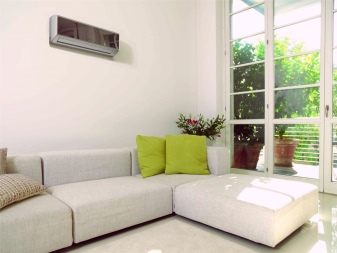
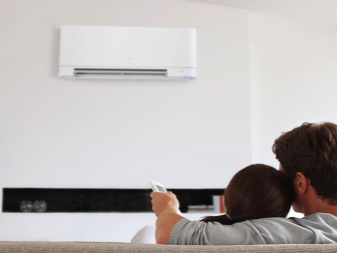
Some homeowners are insured and immediately buy a too powerful split-unit with a large supply of power. However, this approach is not justified. On the one hand, such a system will very quickly cope with the task of air cooling, on the other hand, in conditions of an inappropriate space, the air conditioner will often switch from sleep mode to working mode and vice versa - this entails rapid wear of the equipment. If you are going to do more careful calculations, there are many additional factors to take into account:
- number of storeys;
- the location of the room on the sunny or shady side;
- the height of the walls;
- total glazing area;
- the average number of people constantly staying in the room;
- the amount of heat released from operating equipment.
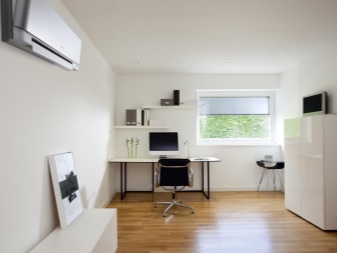
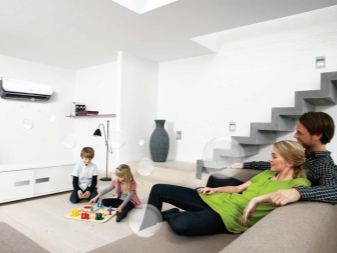
Which brand should you prefer?
Today in the HVAC segment there are hundreds of air conditioners from a huge number of manufacturers. The most reliable manufacturers of HVAC equipment are Japanese brands Daikin and Mitsubishi, as well as Toshiba and Fujitsu. The equipment of these brands is characterized by an increased efficiency indicator, the products are made of high-strength materials and have an impressive arsenal of functionality. However, the cost of such equipment is high and starts from 25-30 thousand rubles.

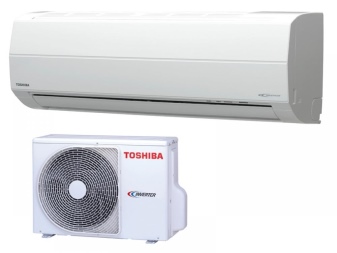
In the segment of "decent quality at a democratic cost", the palm belongs to Korean companies LG and Samsung, Japanese brands Panasonic and Hitachi, companies from the USA General Electric, Fedders, Carrier, as well as the French brand Airwell and Italians Delonghi... The price of these models starts from 20 thousand rubles. In the “economy” segment, in most cases, products are presented by Chinese manufacturers Gree, Haier, as well as Midea, Dantex. The average price tag of such air conditioners is 15 thousand rubles.
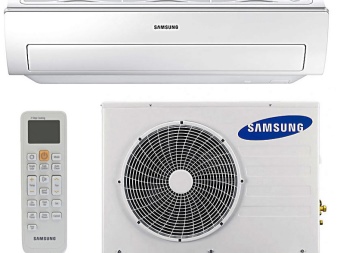
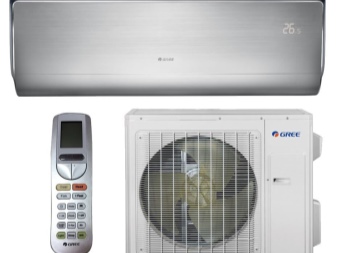
In conditions of limited budget, some buyers make a common mistake when purchasing climate control equipment from unverified importers. If you go this way, then with a high degree of probability you will be offered a split assembled at one of the clandestine workshops in China or Korea, or a model rejected at a company factory.
There is only one guaranteed way not to be the owner of low-quality equipment - it is to contact large suppliers and official dealers.
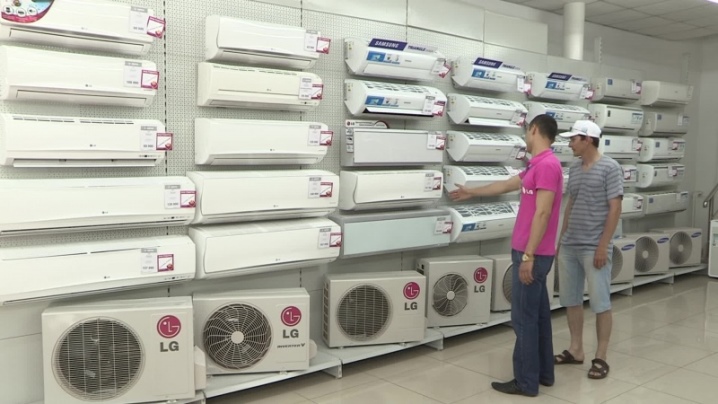
Other selection options
Functions
When buying any HVAC equipment, it is very important to decide on the functionality you need. Nowadays, manufacturers offer split systems and air conditioners with a wide variety of functions; in a competitive environment, each company tries to offer its customers something unique. The set of basic functions includes the following.
- Heating. This option is designed for use during the off-season, when there is no heating in the room yet, but it is already cold enough outside the window. Most split systems provide for operation at temperatures up to -7 degrees, but at lower temperatures outside, the heating power drops, then the risk of icing of the outdoor unit increases.
However, some manufacturers have inverter models - they can heat the living space when it is -25 degrees outside the window.

- Dehumidification. This option is now standard in most air conditioners. It is relevant in conditions of high humidity in the room, its use makes it easier for a person to endure the sweltering heat and protects against the spread of mold.


- Ventilation. Provides free movement of air in the room. In this case, the fan and compressor of the outdoor unit are turned off, only the indoor unit is running.

- Purification of air masses. Almost every air conditioner has a coarse filter, it is able to retain dust, fluff, pet hair and other large particles. The filters become dirty with use, so they need to be removed and rinsed every 3 months. In more modern models, fine filters are installed, they are able to capture particles of the smallest size: plant pollen, as well as gases and smoke and unpleasant odors. It is not always possible to clean such filters with a vacuum cleaner or water; it is best to change them. Often, consultants in trade enterprises say a lot of enthusiastic words about super-fashionable filters, but they are silent about the fact that they need to be updated every month and a half.
For example, a catechin filter can be used for no more than a month, after this period it becomes useless and can cause a putrid odor.
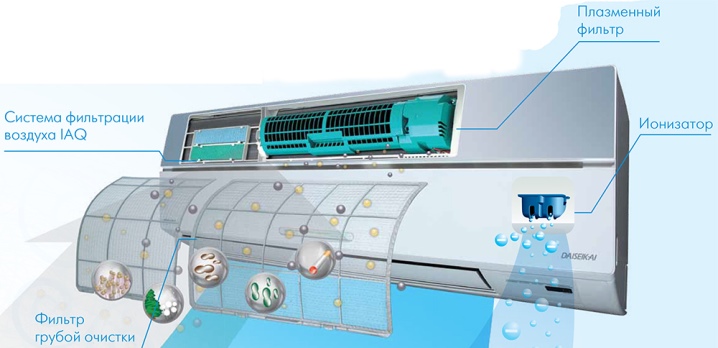
- Ionization. This function is understood as the release of negatively charged oxygen ions into the air. It is believed that they help to improve immunity, increase mental and physical activity. Aeroions are oxygen particles that carry an electrical charge. In the natural environment, they are present in large numbers near waterfalls, on the banks of mountain rivers, oceans and seas, as well as on the slopes of high mountains. However, it should be noted that there is no officially confirmed data on the advisability of using such a mode, so many people do not feel any effect from ionization.
Keep in mind that in cancer and some other diseases, ionization can worsen the condition.
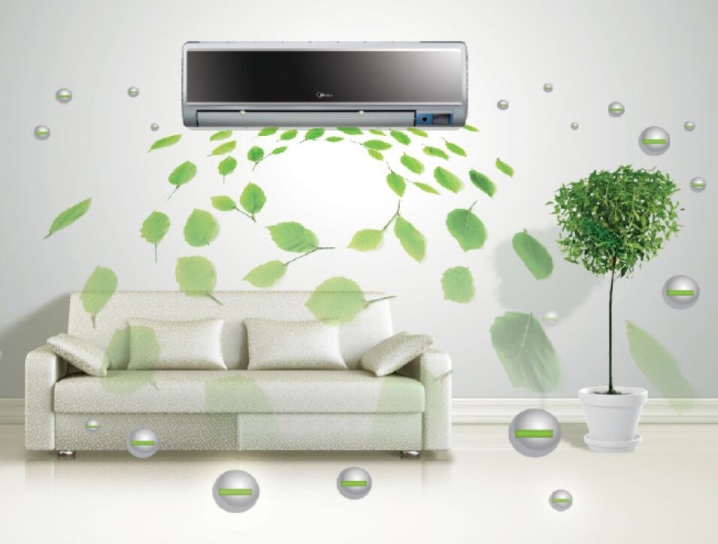
- Oxygen saturation. Under this mode of operation, completely different mechanisms can be adopted. It can be a special generator consisting of two separators - in it, by physical methods, air is separated into nitrogen and oxygen, while nitrogen is removed outside, and oxygen is returned to the room. In some models, membranes are used, when air is sucked in, they retain nitrogen molecules, and oxygen is passed through.
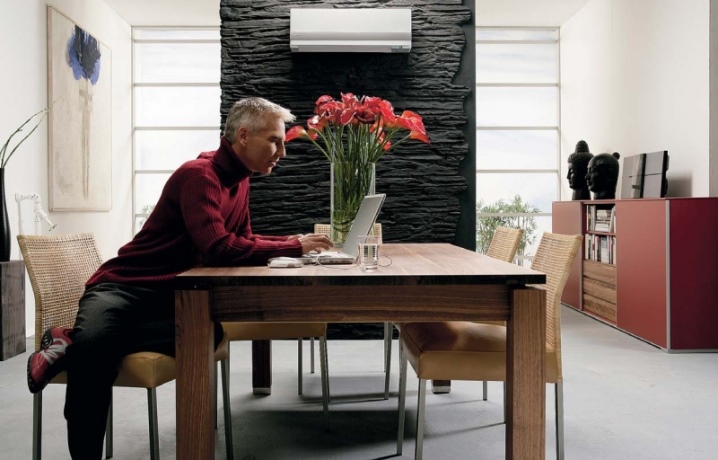
Check out the range of additional features.
- Night mode. This option is intended to reduce the noise generated by the air conditioner by reducing the fan speed. In addition, the unit operating in the night mode reduces the air temperature by a couple of degrees, simulating a nighttime cold snap. Towards the morning, the room temperature returns to a comfortable level for humans.
- 3D stream. In this case, users can adjust the direction of the cooled air circulation.
- Turbo mode. This function is necessary in situations where it is required to very quickly warm up or cool the room, while the air conditioner will operate at maximum power until the set parameters are reached. This usually happens 35% faster than normal operation.
- Defrosting the outdoor unit. The option is relevant when using the air conditioner in the winter season, when the temperature outside the window does not exceed 5 degrees.
- Self-diagnosis. Assumes an independent determination of the malfunction.
- Wi-fi support. In this case, it is possible to control climatic equipment even from a smartphone, however, if there is a convenient remote control, this function is not necessary.
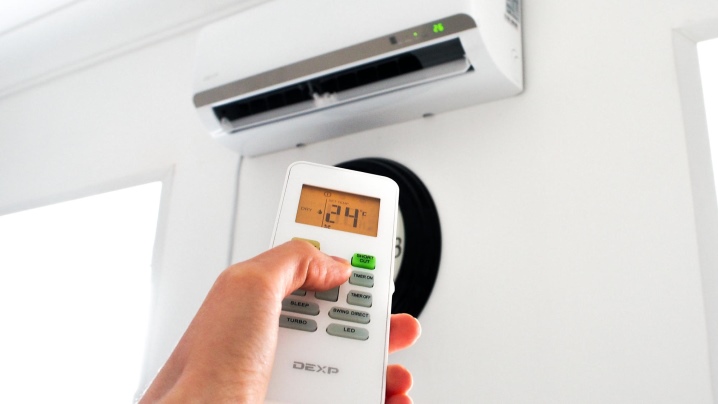
The arsenal of options that can be found in modern air conditioner models is great. As a rule, the more expensive the structure, the more varied the system of individual control over the air conditioning of the room.
For example, the most expensive models have motion sensors, they calculate how many people are in the room at the moment, and based on this parameter, they adjust their performance, as well as the direction of air flows.
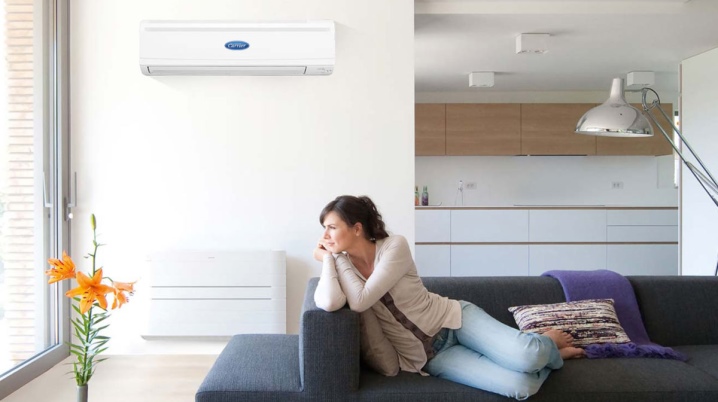
Energy efficiency
The power parameters of a cooling unit are often confusing for non-technical users, as the values turn out to be frighteningly high. However, there is no need to worry - you just need to choose an air conditioner model with a suitable energy efficiency class. The point here is that the power consumption of any device, as well as its functionality, albeit interconnected, are still different units, and their ratio indicates an effective or not transformation of electrical energy into thermal energy. Two basic parameters are used to determine the energy efficiency of HVAC equipment.
- EER - officially established parameter, which is calculated as the ratio of the cooling capacity of the split to the volume of consumed electricity. The indicator is the base for the equipment grading according to the degree of energy efficiency.
- COP - equal to the ratio of the generated heat to the amount of consumed electricity. This coefficient, as a rule, is slightly higher than the EER, since the compressor heating is additionally used to produce heat. By the way, there are cases when unscrupulous manufacturers, in an attempt to overestimate the class of their products instead of EER, indicate COP in their advertising brochures, which is not correct.
The more EER and COP, the more efficient and, consequently, more economical the split will work.

In order for consumers not to get confused in numbers, manufacturers have adopted an alphabetic classification of climatic devices according to energy efficiency categories from "A", which assumes the maximum parameters, to "G" - this is the minimum parameter.
Noisiness
Split should not interfere with the comfortable life of people in the room with its hum. The simplest rule applies here: the quieter the air conditioner works, the better. Most of the models on the market are characterized by a noise emission of 34 dB. In the quietest models of the inverter group, the level of the emitted sound does not exceed 20 dB. In order to understand whether this is a lot or a little, you can simply compare the indicators with the requirements of the Federal Law "On Silence", according to which the noise level at night should not exceed 30 dB.
So, the noise from climate technology with 20 dB can be compared with the ticking of a wall clock or with the whisper of a person. Non-inverter models are louder - they emit from 30 to 45 dB. This corresponds to the accepted standard, during the day you simply will not notice this sound, however, at night it may bother you a little.
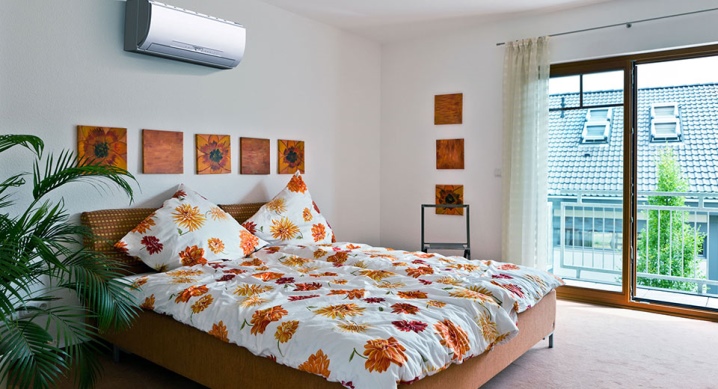
Review overview
Analyzing customer reviews and expert recommendations, the following conclusions can be drawn.
- For a one-room apartment, as well as for houses with a large number of living quarters, it is best to opt for wall-mounted split systems, such designs are optimal for a variety of climatic conditions and temperature fluctuations. In addition, they are presented in a wide price range, so everyone can choose the optimal model, taking into account the possibilities of their budget.
- It makes sense to purchase mobile air conditioners only for placement in the country or in those rooms where there is no possibility to hang a split system with an external module.
- A cassette air conditioner will be the best choice for spaces from 50 m2, for rooms with smaller dimensions, they should not even be considered.
- Before going to the store, make a list of the features you actually need.
- Be sure to check with the seller for the service life of the built-in filters.
- When choosing a model for home use, you should pay attention not only to the cooling area, but also not to the parameters of the system's efficiency. Any models below A class can multiply your electricity bills.
- Do not try to install climate technology yourself. The fact is that with unprofessional installation, the complete collapse of the structure is not excluded. When choosing an installation company, make sure that it has a license to carry out the relevant work, ask for documents confirming the master's permission to provide such services.
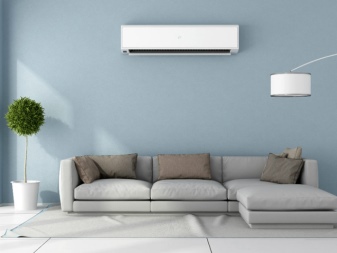
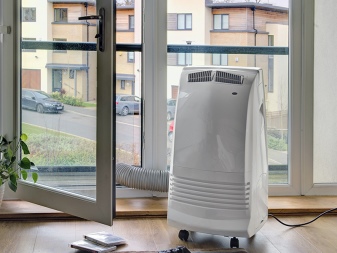
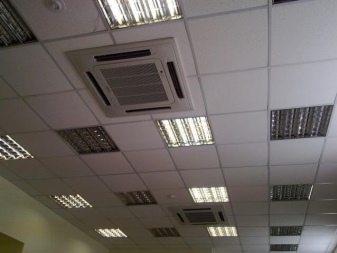
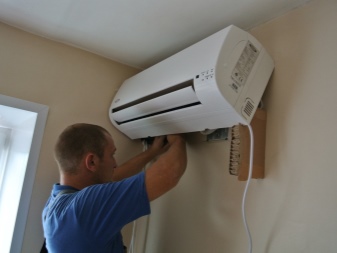
remember, that every air conditioner needs proper and careful care... Filters should be changed at least once every six months so that pathogenic microflora does not accumulate inside. Well, remember that the prices for air conditioning units for a room of 20 sq. m., as a rule, start from 13-15 thousand rubles. and it can take up to hundreds of thousands. However, these are not the final costs you will have to incur.
The fact is that the installation of an air conditioner can be up to 100% of the cost of the equipment itself, and you must be ready for this waste if you want your purchase to really be useful to you, and not to go to the closet "until better times."
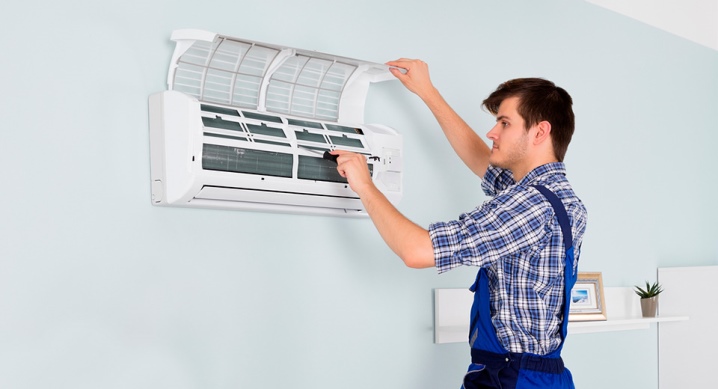
For information on how to choose an air conditioner, see the next video.













The comment was sent successfully.